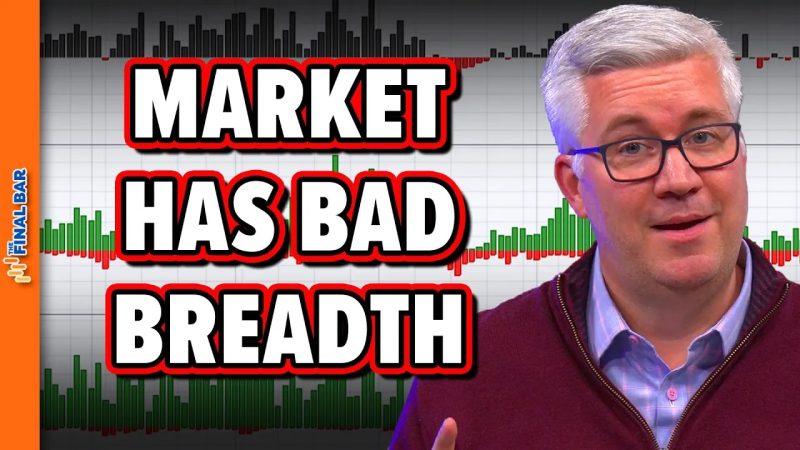Market breadth is a critical indicator in the world of finance, often used to assess the overall health and direction of financial markets. It refers to the measure of the number of individual assets or stocks that are participating in a market upswing or downturn. Essentially, market breadth provides investors with a deeper insight into the market beyond just looking at the performance of major indices like the S&P 500 or the Dow Jones Industrial Average.
When market breadth is strong, it suggests that a larger number of stocks are actively participating in the market’s movement. Conversely, weak market breadth indicates that only a select few stocks are driving the market’s performance, which might not be sustainable in the long run. This raises concerns among investors about the breadth and depth of the market rally.
Despite the recent record highs in major indices like the S&P 500 and the Nasdaq, some analysts are starting to express worries about the underlying market breadth. The concern is that the rally is being narrowly driven by a handful of mega-cap technology stocks, while many other industries and smaller companies are not seeing the same level of growth and participation.
This lack of broad-based participation can be a red flag for investors, as it may indicate that the market rally is not as strong and sustainable as it appears on the surface. It’s essential for investors to pay attention to market breadth indicators to assess the overall market sentiment accurately.
One commonly used measure of market breadth is the advance-decline line, which tracks the number of advancing stocks versus declining stocks. A healthy market typically sees a large number of advances relative to declines, indicating broad participation in the market rally. On the other hand, a narrow advance-decline line suggests that only a small group of stocks are propelling the market higher, which could be a sign of fragility.
Another important indicator that investors can look at is the percentage of stocks trading above their moving averages. When a high percentage of stocks are trading above their moving averages, it indicates widespread bullish sentiment among investors. On the contrary, a low percentage suggests a lack of participation and potentially weakening market breadth.
In conclusion, monitoring market breadth is crucial for investors to gauge the underlying health of financial markets. A strong and broad-based market rally is generally considered more sustainable than one driven by a few large-cap stocks. By keeping an eye on market breadth indicators like the advance-decline line and the percentage of stocks trading above their moving averages, investors can make more informed decisions and better navigate the complexities of the market landscape.
